


Site Map
HOMECall Sign
Ham Clubs
Commercial
Local Sites
My Story
Santa Ana,
California U.S.A.
Site last updated
11/12/2009
My Story
It all started out at a little 1000-watt radio
station in Fresno, oops wrong story (from Ted Knight on the Mary Tyler
Moore show). Actually it all started when I could just crawl, and I did,
with a screwdriver in my hand. I was able to plug it into a power outlet
at which time I went back several feet head over heels, so my parents
told me. After that, I am sure you don't want to continue reading this
autobiography.
The interest in electronics and mechanical gadgets got started (spurred on by the aforementioned mentioned shocking event) in the late forties and early fifties when I obtained some old radios from the Goodwill. In those days the Goodwill had lots of thirties and forties radios that tuned the short-wave bands, this meant lots of neat things to listen to around the world. But, yes, they did have to be repaired first. Again the Goodwill had tables and tables of tubes (you won't find tubes today) and plenty of other radios to get parts from.
This was the time frame of the surplus stores with tones of electronics from WWII was available to tinker with. Much of this gear was suited to amateur radio use with some modifications. The BC610 was a high power AM HF transmitter, the ARC5 series of transmitters and receivers were good HF low power rigs and the 522 was a good 2 meter AM transmitter which had a matching tunable receiver. And then there were the FM tank receivers that tuned the 45MHz police band, we could listen to the local law enforcement.
With all this neat stuff available I decided to get my amateur radio ticket in 1955. I went to a class offered at the local Santa Ana Community College; yes I was only in junior high at the time. I was able to get my novice license KN6UNL, but after playing on the air for a year I let it expire. I again got interested in getting back on the air in 1959 so took the technician test administered by Shelly, W6BAM, and got the call WA6IYF. I then upgraded to General class ticket.
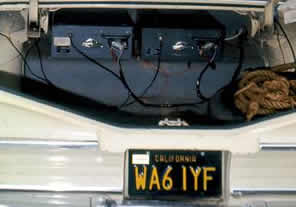
In the early 1960s there were a lot of used 150MHz mobile FM tube style radios becoming available for amateur radio use. So off we went in the 2-meter arena with a Motorola and its all tubes and dynamotor power supply radios in the trunk of my 1960 Chevy. The operating range was not that great, so after observing two repeaters in the LA area, K6MYK AM at 146.98 and another at 146.90 there was also a FM repeater at 146.76 and that was it. I thought it would be nice to place a repeater on top of the tallest mouton in the area, Santiago Peak at 5646 feet. So up it went (can't remember the exact year) on 146.94 after several months of construction (I established the frequency channel 146.94 and as you can see the frequency plan today is an adaptation of this frequency separation, also there was no governing party over the repeaters in those days). The control link was on the 450MHz band. There were three other hams in the construction phase, Leroy W6SYC, Mike WA6HAJ and KJ6W Dick Miller who's (at the time) call it carried. The system was tested at my house on the flat lands for several more mounts until all was stable enough to move to the peak. The biggest hurdle was getting certification from the forestry department that it was clean of any interference with any of the other systems on the peak. It remained until about 1965 when it was move north along the ridge to Sierra Peak at 3048 feet, shortly after that it was moved to Lancaster along with Dick who obtained a job with the county maintaining their communication system.
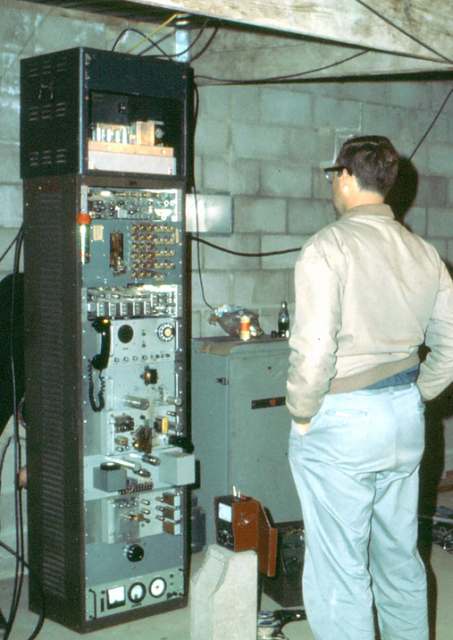
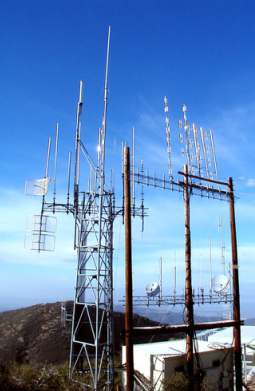
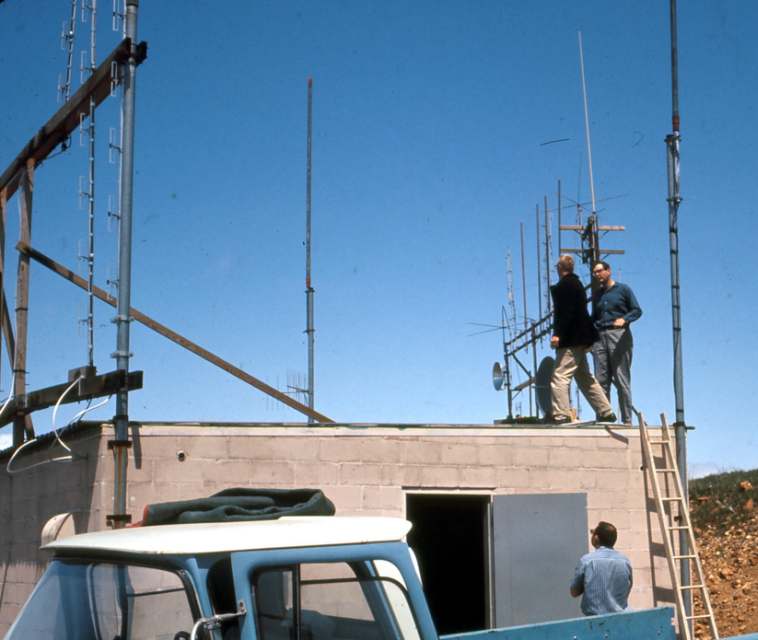
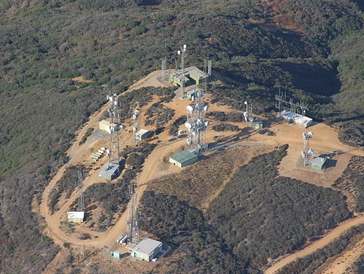
As time went by the idea of putting up another repeater again was suggested among a group of local 220MHz hams. Off and running again parts from a Midland radio were used to make this repeater nice and small. It also incorporated a homemade phone patch and all solid state controller and identifier. As for the location, this time it was placed in the local hills at the residence of Doc W6UPP at about 400 feet, it also carried his call. This made servicing the system very easy but did restrict the coverage. In the mid 70s the FCC change the licensing of repeaters and it became WR6AIZ, this only lasted a short time when it went back to the old way again. Around 1990 the repeater was moved down to Bethel Towers in Costa Mesa, where it resides today. At this time the repeater controller and phone patch was updated to a modern microprocessor controlled commercial product. The repeater was operated and maintained by WK6V, N6AVX and WB6LQL until 2008 when it was donated to the Catalina Repeater Association and managed by its president KC6PCB.
To be continued.. as I am sure that you are interested as to how I became interested in computers, application software testing and the WEB which has reduced my activity on the ham bands.